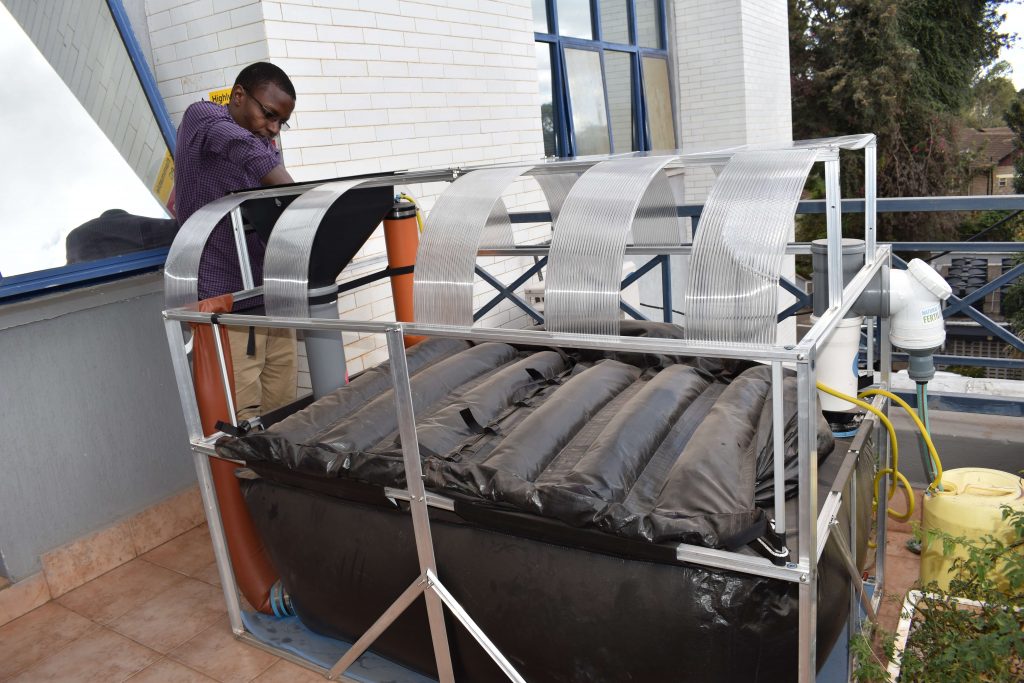
Biogas has over the last couple of years gained popularity in many households especially those with cows and need to supplement their energy needs. The only challenge is that not all people in urban and peri urban homes have the space required to set up the conventional fixed dome. Again, not all households have a cow to feed the bio-digester.
In 2015, Caleb Wasilwa discovered that there was a growing demand for home biogas systems. He formed Bellac Limited to close the gap in the challenges faced in the fixed dome systems and serving the growing demand for home biogas solutions that use food waste.
Together with his team, they put their heads together and came up with a design that was portable and required minimal space to set up. In addition, the digester was designed to take in food wastes from kitchens. The minimum amount of waste required to feed the system is two kilograms. This system helps in waste management and the gas produced is able to cook for three hours.
Caleb advises that the system works best if fed with starch, carbohydrates, leftovers from cooked food and fruit peelings as they speed up the fermentation process and produce more gas.
“The efficiency of the system makes it popular as households can feed the digester with readily available food waste.”
The byproduct after the gas has been produced is liquid fertilizer which is organic and has all the necessary nutrients for plant growth.
“Most of my clients love the byproduct of the anaerobic digester as it is useful for their kitchen gardens and farms. Some have been able to sell the excess liquid fertilizer,” adds Caleb.
Access to the markets has been a challenge. The target market for the systems is somewhat high income earners, but accessing them has not been easy. The high cost of producing the systems and lack of adequate capital has also deterred the growth of the business. The systems are manufactured in Israel. The company also requires financing to buy demonstration units for the small and medium systems. The composition of the food waste for some clients has been a challenge. Vegetable wastes which are largely vitamins do not produce a lot of gas and take a longer time to ferment as compared to carbohydrates and starch.
The Kenya Climate Innovation Center (KCIC) is currently providing business advisory under the mentorship programme, office space and assisting in their branding needs in website development and content generation for marketing the product. Through the renewable energy forums that they have attended, the company has been able to form strategic partnerships and receive more business. KCIC is also assisting in identifying a demonstration site for the system. Bellac has also benefitted from a partnership with Energy4Impact who have been instrumental in coming up with a marketing strategy for refining the business model.
Caleb notes that expanding their product portfolio is part of their future projections. Plans are underway to design a bigger digester that can serve the needs of hotels and other institutions which produce more food waste and have more energy demands for their longer cooking hours.
Are you interested in any of the systems? Contact Caleb Wasilwa on info@homebiogaskenya.com or visit www.homebiogaskenya.com
By Mercy Mumo












